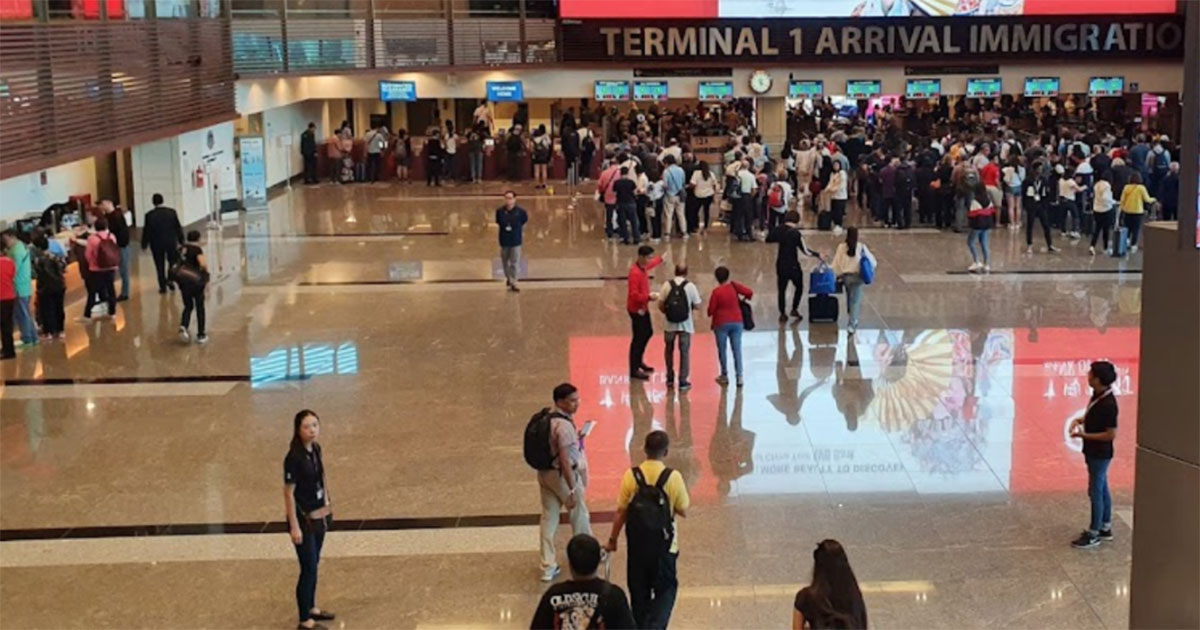Follow us on Telegram for the latest updates: https://t.me/mothershipsg
Singapore's Changi Airport came out tops among Asian airports for international passenger traffic for the second quarter of 2022.
From April to June 2022, Changi Airport handled 7.3 million passengers to take the top spot in Asia, based on data compiled by Singapore independent consulting firm Sobie Aviation, according to South China Morning Post.
The next four busiest airports were Delhi's Indira Gandhi Airport (3.2 million), Bangkok's Suvarnabhumi Airport (3.2 million), Seoul Incheon Airport (2.9 million) and Kuala Lumpur International Airport (2.6 million).
Hong Kong International Airport, one of Singapore's closest competitor in the aviation industry and a leader previously, did not even crack the top 10, as it handled only 591,000 passengers over the three months.
The airport fell to around 30th position and was overtaken by numerous much smaller airports, SCMP reported.
Changi Airport handled 2.93 million passengers in June alone
In June 2022 alone, Changi Airport handled 2.93 million passengers, representing 50 per cent of pre-pandemic levels.
Hong Kong's airport handled 295,000 passengers, a mere 5 per cent of pre-Covid levels.
Hong Kong arrival numbers remain low
Before the pandemic, Hong Kong's airport was consistently number one in Asia in terms of international passengers.
In the second quarter of 2019, it handled 19.1 million passengers, ahead of Seoul Incheon (17.6 million) and Changi (16.8 million).
April 2022 reopening factor
Many Asian countries lifted their Covid-19 travel restrictions since April 2022, causing international travel to rebound.
Singapore, Thailand, Indonesia, Malaysia, Vietnam and the Philippines dropped pre-departure Covid-19 tests for fully vaccinated travellers and no longer require arrivals to undergo quarantine.
Travel to South Asia has been recovering faster, with Delhi, Mumbai and Dhaka airports emerging among the region's top performers.
Mainland China and Hong Kong remain destinations that travellers shun due to their "dynamic-zero" Covid-19 policy requiring travellers to take on-arrival tests for the virus and undergo quarantine in hotels.
In June, Japan reopened to foreign tourists arriving as part of tour groups, while South Korea still required visitors to test upon arrival.
Sine Aug. 12, Hong Kong has shortened the compulsory hotel quarantine for arrivals from seven days to three plus four days of home medical surveillance with limited freedom of movement.
Asia still lagging
Globally, Asia still lags behind other parts of the world.
In June, international passenger demand in Asia was 30 per cent of pre-pandemic levels.
Europe and North America, which reopened earlier, have hit 65 to 85 per cent in some regions.
Top photo via
If you like what you read, follow us on Facebook, Instagram, Twitter and Telegram to get the latest updates.
